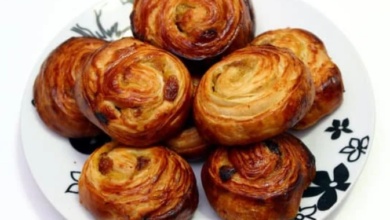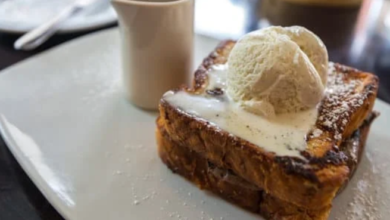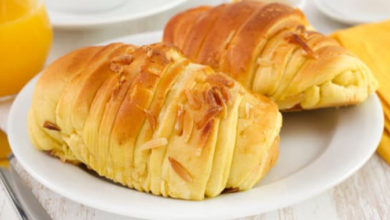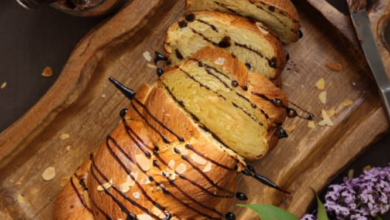Discover What Makes Brioche So Shiny
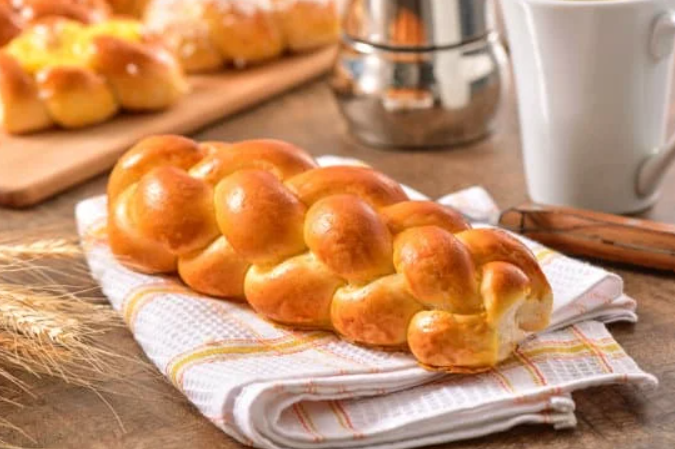
What To Know
- As the bread bakes, the sugars in the dough caramelize and react with the proteins in the eggs and flour, creating the characteristic golden-brown crust.
- When the butter melts during baking, it creates a barrier on the surface of the bread, preventing moisture from escaping and resulting in a shiny, golden crust.
- Ensure you are using a high proportion of eggs in the dough, kneading the dough thoroughly, and baking the bread at the correct temperature.
Brioche, an exquisite French bread renowned for its golden-brown crust and soft, pillowy interior, captivates bakers and bread enthusiasts alike. One of its most captivating attributes is its alluring shine, which sets it apart from other bread varieties. But what is the secret behind this radiant glow?
The Role of Eggs
Eggs play a crucial role in the unique texture and appearance of brioche. The high proportion of eggs in the dough contributes to its richness and tenderness. The egg yolks, in particular, are responsible for the bread’s golden color and shiny exterior. The proteins in the egg whites form a network that traps air, resulting in a light and airy crumb.
The Maillard Reaction
The Maillard reaction is a chemical reaction that occurs when proteins and sugars interact in the presence of heat. This reaction is responsible for the browning and flavor development in brioche. As the bread bakes, the sugars in the dough caramelize and react with the proteins in the eggs and flour, creating the characteristic golden-brown crust.
The Use of Butter
Another key ingredient in brioche is butter. The high fat content of butter contributes to the bread’s richness and flakiness. When the butter melts during baking, it creates a barrier on the surface of the bread, preventing moisture from escaping and resulting in a shiny, golden crust.
The Kneading Process
The kneading process also plays a role in the shine of brioche. Kneading helps to develop the gluten in the flour, which creates a strong and elastic dough. This elasticity allows the bread to rise and expand during baking, resulting in a light and airy crumb with a smooth, shiny surface.
The Baking Temperature
The baking temperature also affects the shine of brioche. Brioche is typically baked at a high temperature, which helps to create a crispy crust and a golden-brown color. However, if the temperature is too high, the bread can burn and become dry.
The Humidity Level
The humidity level in the oven can also impact the shine of brioche. A humid environment helps to create a shiny crust by preventing the bread from drying out too quickly. However, if the humidity is too high, the bread can become soggy and lose its crispness.
The Finishing Touch
After baking, brioche can be brushed with a mixture of egg yolk and water to enhance its shine. This glaze helps to create a glossy finish and adds a touch of sweetness to the bread.
Embracing the Brilliance of Brioche
The lustrous shine of brioche is a testament to the careful craftsmanship and precise techniques involved in its creation. From the generous use of eggs to the meticulous kneading process, every aspect of brioche baking contributes to its radiant appearance. Embrace the allure of this exquisite bread and enjoy its golden-brown glow with every bite.
What People Want to Know
Q: Why is my brioche not shiny?
A: Ensure you are using a high proportion of eggs in the dough, kneading the dough thoroughly, and baking the bread at the correct temperature.
Q: Can I use margarine instead of butter in brioche?
A: While margarine can be used as a substitute for butter, it may not yield the same level of richness and shine.
Q: How can I prevent my brioche from becoming dry?
A: Bake the bread in a humid environment and avoid overbaking it.
